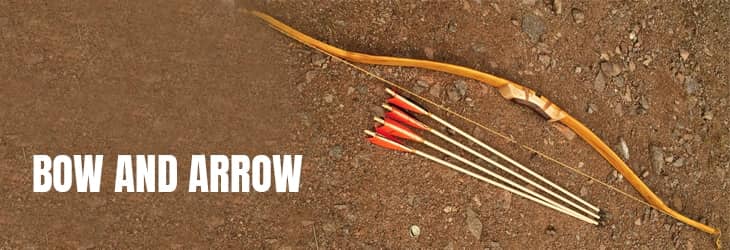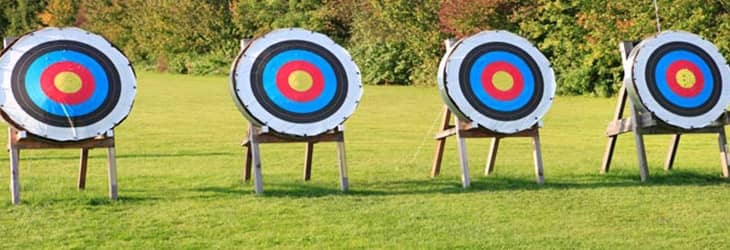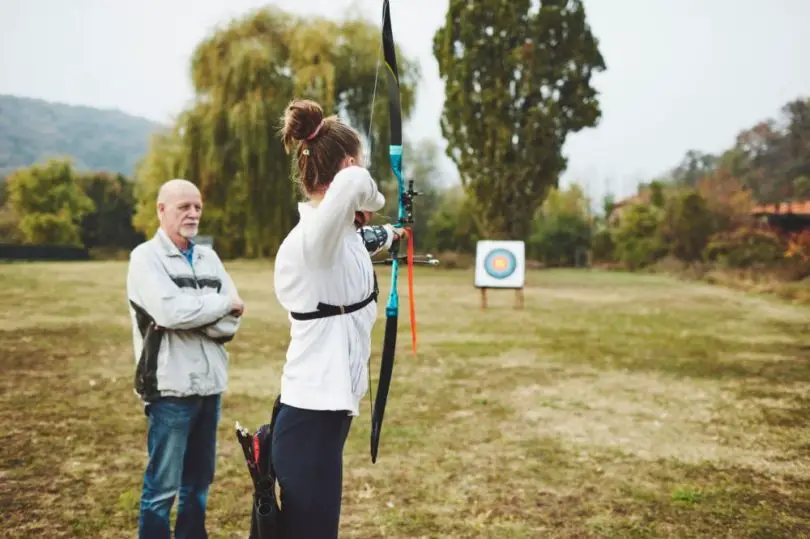Archery is a great sport that can be enjoyed by people of all ages and abilities. It requires skill, concentration, and focus to hit the target accurately. Whether you’re into traditional archery, bowhunting, or target archery, it’s important to understand the basics and fundamentals of the sport.
If you’re interested in how to learn archery, you’re in the right place. This guide will provide a comprehensive overview of all the archery basics, and techniques, from proper form and stance to shooting tips and maintenance advice.
Without any further ado, let’s start the exploration of archery for beginners.
Archery for Beginners: Basics You Need to Know
Know What’s Best for You
Before selecting the perfect archery equipment for you, consult a skilled archer or your local archery shop. They’ll know what may fit you perfectly.
This is particularly important because there are different types of bows available and each has different draw lengths, and if you choose the wrong one, you may have to apply too much force to pull the bow, which will ultimately affect your accuracy and performance.
Joining archery club to hitting the local archery range is also a good idea. That way, you can access the help of more experienced archers who can assist and guide you throughout your journey in learning archery.
You’ll also be able to discuss all the problems that you’re facing and get guides from skilled archers.
Bow and arrow
As we all know, the bow and arrows are the main constituents of this sport.
Choosing the right bow can make a big difference in the accuracy of your shots. You can choose from compound bows, crossbows, the longbows, or recurve bows. Try a number of bows before settling for one.
You’ll need to choose a bow with the poundage that fits you.
Poundage, also known as the draw weight, refers to the amount of weight it takes to pull the bowstring back. The poundage depends upon your size and strength.

For arrows, you’ll need to choose the arrow that is of the proper length. To know the length of arrows you need, you should look at first measure your arm span.
Then you must divide the number by 2.5. This number represents your draw length.
Choose arrows that are slightly longer than that number.
You’ll have options to choose from carbon, aluminum, fiberglass, and wooden arrows. The perfect bow and arrow for beginners would be a recurve bow with fiberglass arrows since they are inexpensive, easy to use, and don’t require a lot of force to make a full draw.
If you want to read more about different types of arrows, follow the link.
You can also get archery set for beginners at your local archery range, depending on what type of archery you want to persue. Talk with any professional before setting on your equipment.
Safety Equipment
When it comes to archery for beginners, safety is a big concern. When you’re practicing archery, you must give importance to your safety. Expert archers often use an arm guard to protect their hands from the snap of the string.
Some also use a shooting glove or finger tab which protects their fingers from the strain of pulling the string.
There are also various types of release aids such as a wrist strap release, back tension release, or thumb trigger release to help you have a more relaxed grip on the bow and shoot it with precision.
As a beginner, you must also wear a chest guard so that you can flatten your chest and prevent the string from snagging onto your clothing.
If you’re practicing in a range with other archers, wearing bright-colored clothing is recommended. Doing this will make you more visible and prevent any accidents.
These are important pieces of safety equipment and should be used for your own protection.
Choose an Area Where You Can Practice
To get better at this sport, you must practice hard. You’ll need a wide-open space for this.
You can use your backyard or a local range but make sure that there’s nobody in front of you when you’re practicing.
If you join the local archery club, you can sign up for a beginner’s course for basic archery lessons. These clubs often have dedicated archery ranges where you can practice.

Fundamentals
Before you start shooting, you should figure out which eye is the dominant one. It is particularly important as it heavily affects the accuracy of your shots.
To determine your dominant eye, form a triangle with your thumb and forefingers.
Next, focus on an object that is 15 feet away and make sure that it is in the middle of the triangle.
Now close one eye and look at the object through the triangle. If the object is still in the middle, that is your dominant eye. If it is not, then open the other eye which should bring the object back in focus and that will be your dominant eye.
Now that you know which is your dominant eye, you’ll need to make sure that it aligns with the arrow when shooting while your non-dominant eye is closed.
If you’re using a rangefinder, you’ll also need to know how to sight in your bow. Always choose a high-quality rangefinder to increase your accuracy.
Another important fundamental is the proper form. You should make sure that you have a good posture and stand facing the target, with your feet shoulder-width apart. Keep your chest and torso straight and slightly bend your knees.
Your back should be straight and your arms relaxed. Pull the bowstring smoothly towards your face and once your fingers touch your chin, lock in the position for a few seconds before releasing the arrow.
Hold onto the bow firmly and make sure that you don’t stumble when you’ve launched the arrow.
One mistake that most beginner archers do is holding their breath when they’re taking a shot.
You should never hold your breath because it will reduce the amount of oxygen that reaches your brain, hampering your eyesight and affecting your accuracy.
It is recommended that you exhale when taking your shot as it lines up with the trajectory of the arrow.
Wind Direction
Wind affects the trajectory of the arrow and it is important to take this into account when shooting.
Always check which direction the wind is blowing from (if any) before you start shooting. Depending on its strength, a strong gust of wind can have an impact on your accuracy.
Expert archers often use a flag to know the wind direction and speed, and they adjust their angles accordingly.
Practice, Practice, and Practice!
You’ve heard of the proverb ‘practice makes a man perfect,’ right? That’s true for archery as well.
You must practice hard to get better at archery. Finding ways to get better at this sport is impossible if you don’t commit to sufficient practice.
Once you understand these basics, you can start practicing. Start by setting up a target and practice shooting at it from various distances.
At first, try to shoot from shorter distances of 5-10 yards before you move onto longer ones. Make sure that you focus on your technique and don’t worry too much about the accuracy of your shots.
As you get better, try to increase the range and focus on hitting the bullseye. It is important to keep track of your progress so that you can understand where you need to improve.
Conclusion
Archery for beginners is easier than you might think, but many people often face difficulties in getting started.
You can easily admit yourself to a local archery club and practice with other skilled archers. Seek expert tips for quick advancements in your archery career.
Get yourself equipped with dedicated arrows and bows for archery beginners, get familierized with the fundamentals of this sport and get into practise.
Through regular practice, you will get better at this amazing sport and soon join the elite archery club.
FAQs
What is the Most Important Skill in Archery?
The most important skill in archery is being able to focus on the target and let go of outside distractions. Focus is essential for a successful shot, as it will help you maintain proper form, ensure accuracy and consistency, and allow you to stay relaxed throughout your shots.
What Size Bow Do I Need?
Generally speaking, small-framed archers should look for bows with shorter draw lengths, while larger framed archers may prefer bows with longer draw lengths.
As a rule of thumb, pick 56 to 58 inche bow if your draw length is less than 28 inches. A 60 inch bow will perform the best for draw length of 28 to 29½ inches. If your draw length is over than that, choose a 62 inch bow. Here are more about choosing a bow.
What Should You Not Wear for Archery?
It’s important to wear comfortable clothing that does not restrict your movements or affect your stance and form. Avoid wearing restrictive clothing such as jeans, bulky sweaters, and heavy boots. Additionally, loose jewelry should also be avoided as it can get in the way of a successful shot and cause injury.
What is a Common Mistake in Archery?
Holding the bow. If you don’t hold the bow in a proper position, everything that’ll come after will become harder to control. As the bow’s grip resemble the grip of a handgun, many novice shooters hold them like a gun, which affects their accuracy.
How Big Are Archery Targets?
Generally speaking, field-archery targets are usually larger than indoor-archery targets, but both typically range in size from 18 to 24 inches in diameter. 3D targets are usually much larger than standard archery targets, ranging in size from 30 to 90 inches in diameter.








Leave a Comment